Ed Wagemann's Blog: who will save rock n roll?, page 4
December 1, 2022
I wanna be you man: How badly did the Stones rip off the Beatles?
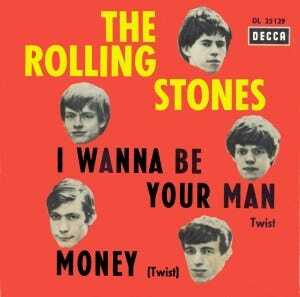
The Stones had signed with Decca Records after Decca had taken a lot of flack for previously passing on the Beatles. Decca was eager to save face — and wanted to start fighting for a share of the new young record buying market that the Beatles ruled supreme over. So they signed the Stones as a Beatles replacement. This gave Oldham an idea. He was smart enough to realize that no band could compete with the Beatles, so he devised a brilliant plan that would get the Stones mentioned alongside the Beatles as much as possible. The plan was to market the Stones as the anti-Beatles. Whereas the Beatles manager Brian Epstein went to great lengths to clean the Beatles up and make them respectable, Oldham would do just the opposite with the Stones. He would take this group of middle-class kids and dress them down to look tough, dangerous, sloppy, raunchy. Soon, with Oldham’s encouragement, press releases were asking the question: “Would you let a Rolling Stone date your daughter”.
Oldham also encouraged the Stones Keith Richards and Mick Jagger to follow in Lennon and McCartney’s footsteps by writing their OWN material. But that soon proved to be a skill that did come as easy to them as it had to Lennon-McCartney, so they continued to record songs written by others — usually American blues artists. Still though, in 1964, after the Beatles conquered America and the British Invasion was in full swing, the Stones continued to follow in the Beatles footsteps and headed to the US for a tour that included a number of TV appearances along the way. The results were a disaster and after just a couple weeks the Stones limped back to their homeland, publicly mocked by lounge singer Dean Martin and upstaged by the Godfather of Soul James Brown.
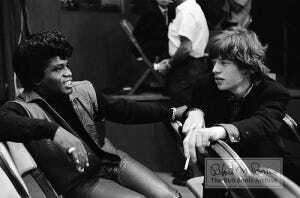
The Stones were down, but not out — for, while in the U.S.A, they had visited Chess records in Chicago and met with the legendary Muddy Waters. This proved to be a transformational experience. The Stones recorded their next album there at Chess and everything changed for them from that point on. For the next two years the Stones went on a streak of hit records that rivaled the Beatles. And it was at that point that a fabricated Beatles-Stones rivalry became common fodder for Rock audiences all over the world.
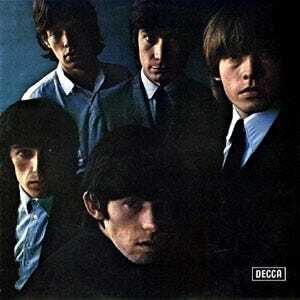
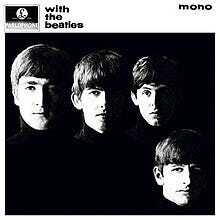

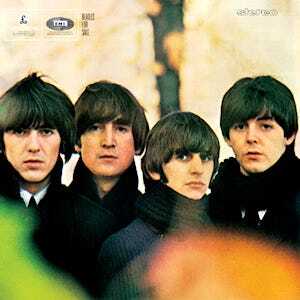
The stones played this rivalry for all they could get, particularly in their album cover art. The first album cover that the Stones emulated the Beatles on was Rolling Stones №2 which looked suspiciously similar to With the Beatles. This may have been a coincidence, but then the Stones put out Between the Buttons, with an album cover of them standing in the woods, wearing dark overcoats and with portions of the photo out of focus — which was amazingly similar to the Beatles For Sale which came out over a year earlier.
Certainly the Beatles were aware of the Stones copycatting them by this point, for on the cover of their next album — the historic Sgt. Pepper’s Lonely Hearts Club Band — the the Beatles included a small sign that read “Welcome The Rolling Stones” — as if the Beatles knew the Stones were going to rip them off on this album as well.
And rip them off they did! Sgt. Pepper’s Lonely Hearts Club band was an album that re-defined the Rock landscape and was so in tune with the psychedelic sound of the time that it struck a chord with a generation of new music critics and fans alike that has never really been witnessed since. It was so huge and influential that everything in its wake was in its shadow. So when the Stones were ready to make their next album they decided to stick with their formula of being the anti-Beatles. Not only did they fill their next album with psychedelic songs, but they hired Michael Cooper (the artist who photographed Sgt. Pepper cover art) to create a 3D photo for their own album — which they titled Their Satanic Majesties Request. The result was a cover that ripped off the covers of both of the Beatles 1967 releases; Sgt. Pepper and Magical Mystery Tour. The rip off was so complete that the Stones actually had Cooper hide images of the Beatles faces in the flowers on the cover!

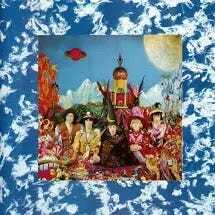
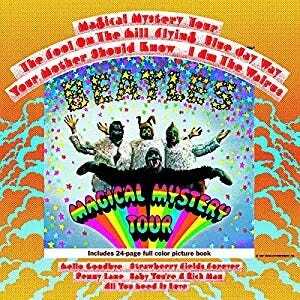
Their Satanic Majesties Request was not as well-received as Sgt. Peppers Lonely Hearts Club Band, but that did not stop the Stones from continuing to copycat the Beatles. In 1968, the Beatles released their eclectic self-titled album, commonly referred to as the White Album. The White Album mixed folk, music hall, pop, blues, rock, experimental sound collage, and even a country-flavored tune or two into a double album. The Stones followed later in the year with their own eclectic offering of county and blues songs, Beggar’s Banquet. Most striking however, was how the Stones, once again, copied the Beatles cover art for the album:
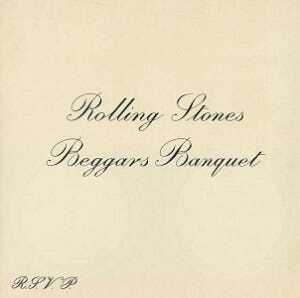
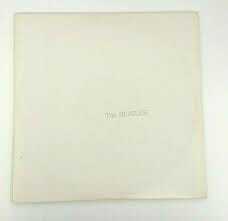
But the Stones didn’t stop there. Next, still trying to ride on the Beatles coat tails, the Stones began plans to shoot an ad hoc film called The Rolling Stones Rock and Roll Circus with hopes of having it air on the BBC. Filming came exactly one year after the BBC aired a Beatles ad hoc film titled The Magical Mystery Tour.
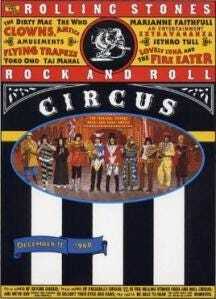

Interestingly enough, Beatle John Lennon even directly participated in this copycat endeavor by fronting and performing with a one-off supergroup called the Dirty Mac with the Stones Keith Richards on guitar. Dirty Mac performed the Lennon song “Yer Blues” which he had previously recorded with the Beatles for The White Album. Lennon’s participation in the Rock and Roll Circus seems to hint that the Beatles took the the Stones imitating them all in good fun. The Stones and Beatles were good friends after all. Still though, the Stones imitating the Beatles became so blatant by 1969 that Lennon decided to call them out for it in his song “Dig A Pony” when he sings:
I roll a stoney.
Well you can imitate everyone you know.
Yes, you can imitate everyone you know.
I told you so!
This did not deter the Stones however. One month after the filming of The Rolling Stones Rock and Roll Circus, the Beatles recorded the song “Let it Be” which also eventually became the title of the album they were recording. The Stones’ founder Brian Jones played saxophone on the B-side of “Let it Be”. And in December of 1969, the Stones followed “Let it Be” with their song “Let it Bleed” which also became the title of their next album.
Would the copycatting ever cease? In 1970 it seemed as though it would, for the Beatles famously broke up and there would be nothing new for the Rolling Stones to copy cat from then on. But lo and behold, what did the Stones do after that? Trying to make a comeback in the later 1970’s, the Stones fittingly made them selves up to look like whores for their album cover for Some Girls and dug into the past to copycat the Beatles’ A Hard Day’s Night:
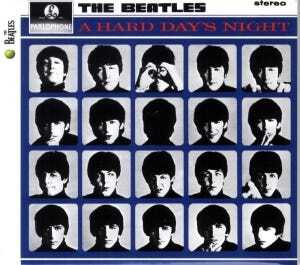
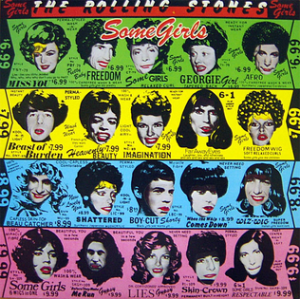
It’s hard to believe that all this copycatting could just be a coincidence. It is easier to believe that the Stones deliberately “ripped off” the Beatles — perhaps as a joke. Everyone said the Stones were the anti-Beatles or were riding on the Beatles coat tails, so why shouldn’t the Stones have some fun and go over board with it? Sorta like when John Lennon wrote the lyrics for “Glass Onion”. Lennon was making fun of the media for reading too much into his lyrics. Maybe the Stones were making fun of the media for reading too much into the Beatles-Stones rivalry.
[image error]November 7, 2021
the baseball cap worn backward
Living in the 90's: the Backwards Baseball Cap
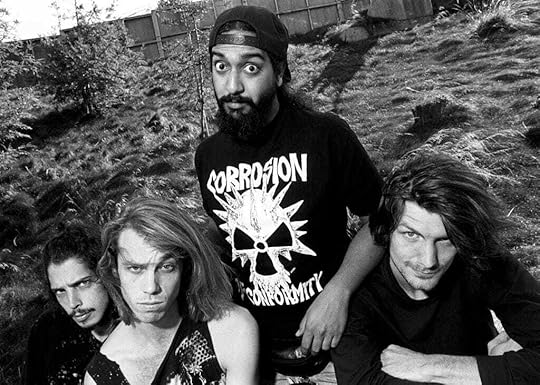
The baseball cap worn backward became a popular fashion for headwear in the early 1990s, as it was a staple of the grunge ‘look’. By the mid-1990s it was hard to find a rock band that didn’t have a dude in it that wore his ball cap backward. the Beastie Boys, Limp Bizkit, Nirvana, Smashing Pumpkins, Soundgarden, the Red Hot Chili Peppers, R.E.M, Pearl Jam, Guns N Roses. Hell, even Neil Young jumped on the backward cap bandwagon.
Several pop culture pundits have cited Seattle Mariner baseball star Ken Griffey Jr. as starting the trend of wearing baseball caps backward. Others argue that the backward baseball cap was first popularized by rap groups of the late 80s like Public Enemy, NWA, 2Pac, Snoop Dogg, and Ice-T. But in fact, the tradition started decades earlier.
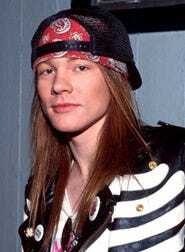
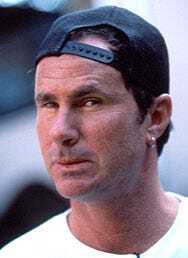
The backward ball cap seems like an oxymoron — after all, the ball cap was specifically designed with a brim to shade sunlight from the wearer’s eyes. So why would anyone wear one backwards? Well, let’s take a quick look at the history of the baseball cap.
Baseball caps were developed around 1860 when the New York Knickerbockers baseball team were wearing wool caps with a brim — these caps had evolved from straw hats they had been wearing for over a decade. No one was wearing them backwards at that time, but in 1878 Harvard third baseman Fred Thayer noticed that his team’s catcher was getting knicked by foul balls rather regularly. Worried that his catcher would get seriously injured, Thayer grabbed a mask from the fencing team and made some adjustments so his catcher could see better while wearing it. Within weeks Thayer was applying to patent his creation: the first safety-mask for baseball players. This is all documented, but what is not known is whether or not his catcher turned his baseball cap around while wearing his mask. Maybe the catcher just took his cap off.
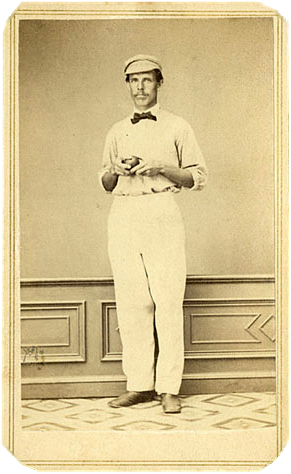

Searching the archives of several baseball websites, you can see that ‘rally caps’ were popularized in the 1980s, in which major league and college ball players would wear their caps inside-out at crucial moments in a game with the hopes that it would turn their team’s luck around and start a rally. The 1985 Mets were especially known for this. Sometimes they would wear the caps inside out and backwards. But even further back than that, in the 1940s, players on the Detroit Tigers had turned their hats inside out — apparently just for shits and giggle. There is no evidence that those Tigers wore their hats backwards, however. In fact, the very earliest photographic evidence I came upon in which a ballplayer has seen with his hat turned around is on an iconic 1968 Topps baseball card of the legendary Hall of Fame catcher from Oklahoma, Johnny Bench. It’s very doubtful that Bench was the first catcher to wear his hat backwards, but that card certainly made an impression on many of the young hipster dudes in their mid-20s who were wearing their baseball cap backwards some 20 to 25 years later. This included me and my brother Matt. Matt had been a catcher in little league, and had worn his baseball cap backwards during games. A few years later I was a bicycle delivery boy while in college and wore my ball cap backwards to prevent it from blowing off my head as I zipped around the city at high speeds. Certainly, we were not alone. Everyone from delivery boys to movie stars to local politicians was wearing their ball caps backwards in the1990s. And who knows — maybe even a future President of the United States was doing it…

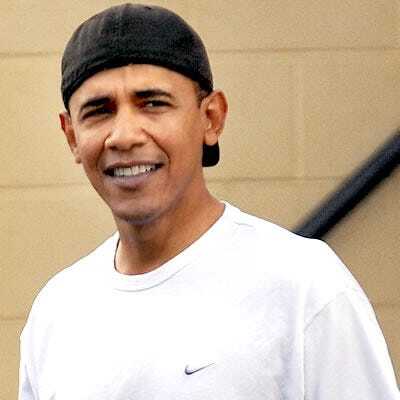

Here are some more notable backward ballcap wearers of the 1990s: How many do you recognize?

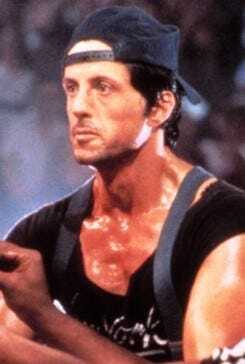
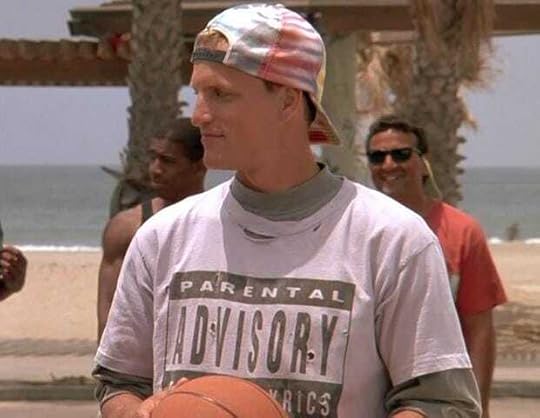
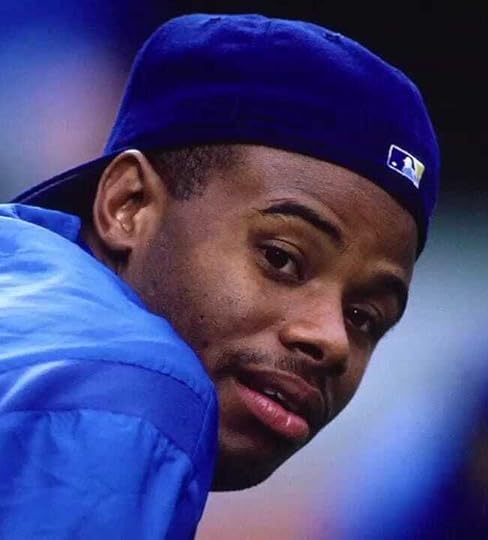
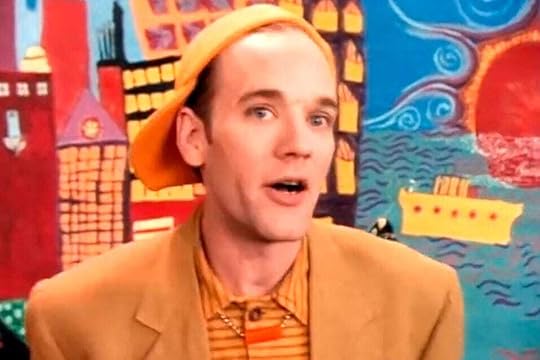
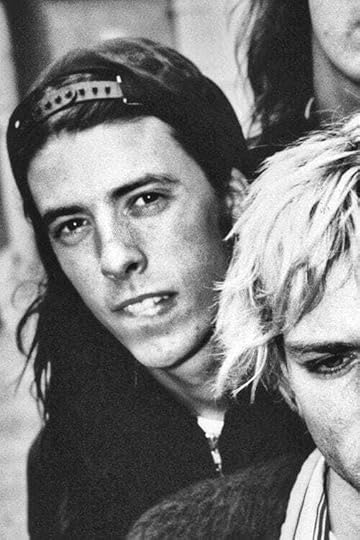
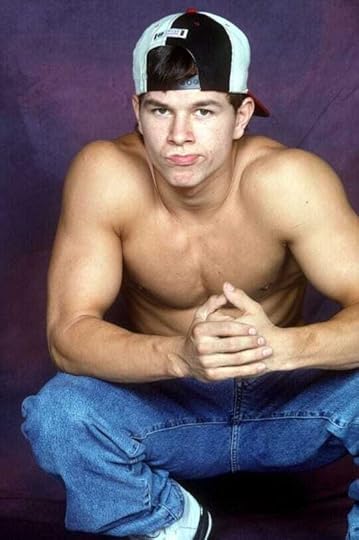
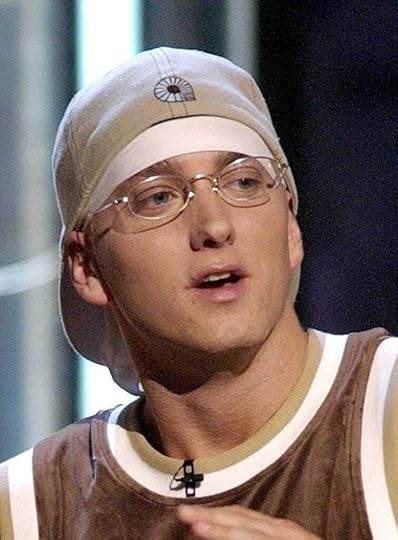
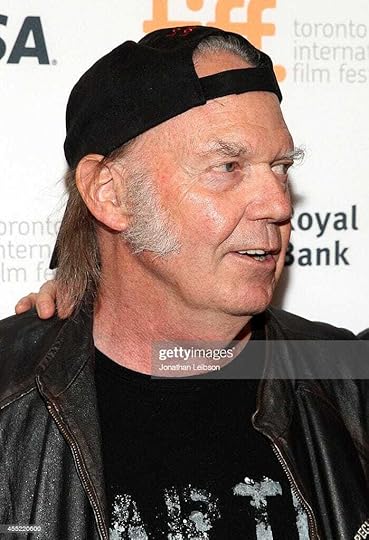
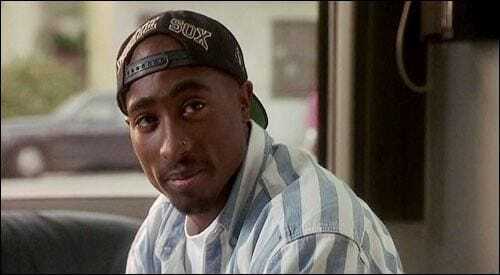
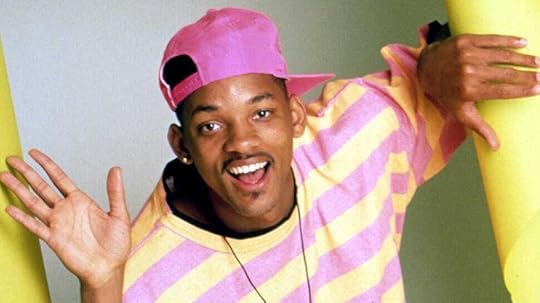
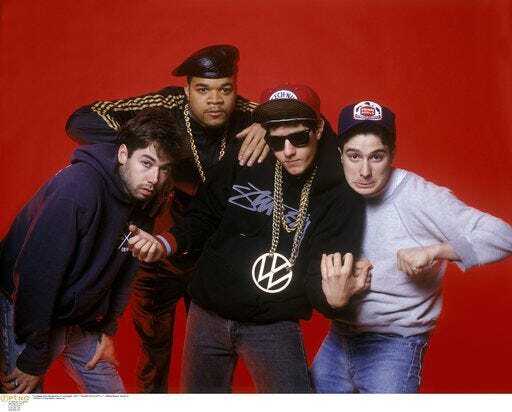
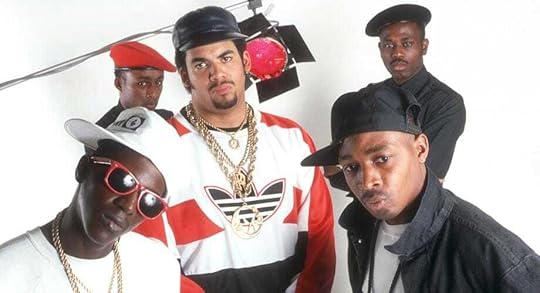
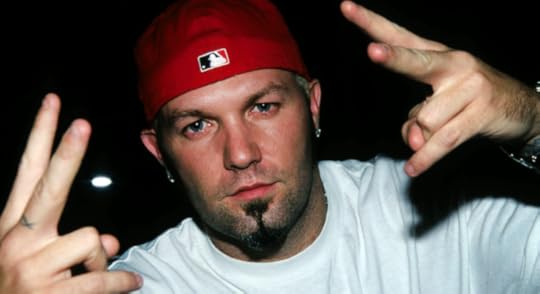
 [image error]
[image error]
The baseball cap worn backward became a popular fashion for headwear in the early 1990s, as it was…
Living in the 90's: the Backwards Baseball Cap

The baseball cap worn backward became a popular fashion for headwear in the early 1990s, as it was a staple of the grunge ‘look’. By the mid-1990s it was hard to find a rock band that didn’t have a dude in it that wore his ball cap backward. the Beastie Boys, Limp Bizkit, Nirvana, Smashing Pumpkins, Soundgarden, the Red Hot Chili Peppers, R.E.M, Pearl Jam, Guns N Roses. Hell, even Neil Young jumped on the backward cap bandwagon. Several pop culture pundits have cited Seattle Mariner baseball star Ken Griffey Jr. as starting the trend of wearing baseball caps backward. Others argue that the backward baseball cap was first popularized by rap groups of the late 80s like Public Enemy, NWA, 2Pac, Snoop Dogg, and Ice-T. But in fact, the tradition started decades earlier.


The backward ball cap seems like an oxymoron — after all, the ball cap was specifically designed with a brim to shade sunlight from the wearer’s eyes. So why would anyone wear one backwards? Well, let’s take a quick look at the history of the baseball cap.
Baseball caps were developed around 1860 when the New York Knickerbockers baseball team were wearing wool caps with a brim — these caps had evolved from straw hats they had been wearing for over a decade. No one was wearing them backwards at that time, but in 1878 Harvard third baseman Fred Thayer noticed that his team’s catcher was getting knicked by foul balls rather regularly. Worried that his catcher would get seriously injured, Thayer grabbed a mask from the fencing team and made some adjustments so his catcher could see better while wearing it. Within weeks Thayer was applying to patent his creation: the first safety-mask for baseball players. This is all documented, but what is not known is whether or not his catcher turned his baseball cap around while wearing his mask. Maybe the catcher just took his cap off.


Searching the archives of several baseball websites, you can see that ‘rally caps’ were popularized in the 1980s, in which major league and college ball players would wear their caps inside-out at crucial moments in a game with the hopes that it would turn their team’s luck around and start a rally. The 1985 Mets were especially known for this. Sometimes they would wear the caps inside out and backwards. But even further back than that, in the 1940s, players on the Detroit Tigers had turned their hats inside out — apparently just for shits and giggle. There is no evidence that those Tigers wore their hats backwards, however. In fact, the very earliest photographic evidence I came upon in which a ballplayer has seen with his hat turned around is on an iconic 1968 Topps baseball card of the legendary Hall of Fame catcher from Oklahoma, Johnny Bench. It’s very doubtful that Bench was the first catcher to wear his hat backwards, but that card certainly made an impression on many of the young hipster dudes in their mid-20s who were wearing their baseball cap backwards some 20 to 25 years later. This included me and my brother Matt. Matt had been a catcher in little league, and had worn his baseball cap backwards during games. A few years later I was a bicycle delivery boy while in college and wore my ball cap backwards to prevent it from blowing off my head as I zipped around the city at high speeds. Certainly, we were not alone. Everyone from delivery boys to movie stars to local politicians was wearing their ball caps backwards in the1990s. And who knows — maybe even a future President of the United States was doing it…



Here are some more notable backward ballcap wearers of the 1990s: How many do you recognize?














 [image error]
[image error]
April 4, 2017
Why I let my 5 year old son say the world “Bullshit”
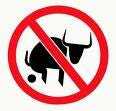
**This entry has been re-posted due to popular demand. Its original posting was in 2010.
Before you pelt me with molotav cocktails, hear me out. A few months ago I was in front of a so-called “progressive” Cook County circuit court judge trying to convince him that I should have expanded visitation with my two preschool aged children. The judge looked down on me from his perch and asked, “How much do you pay in child support?” “330 dollars a month,” I replied. “And you have a Master’s Degree? You can do better than that,” he informed me. The implication was that if I want to have more time with my kids then I need to make more money. The word “Bullshit” instinctively popped into my head — a word that was introduced into my vocabulary sometime in the mid 1970s — but I bit my tongue before the word had a chance to formulate past my lips. If I was on the ball I might have tried to explain to this judge that as a grade school teacher in a school district that has 20% of its population living below the poverty level I don’t get paid a whole hell of a lot of money. I suppose I could take my Master’s degree in writing and apply to a marketing firm and write magazine ads that convince teenage girls that they are fat and ugly and that unless they purchase Whatever corporate cosmetics/diet pills, etc. that I’m peddling then they will always remain fat, ugly and worthless. If I did that then I could make ten times more money than I do now, so would the judge consider me to be “doing better than that” then? But I wasn’t on the ball, the only word that came to mind was simply “Bullshit!” Bullshit because I’m stuck in a legal system that promotes the practice of “buying parenting time”. Bullshit because if being a good father was solely based on how much money you make, then Saddam Hussein would have been fricking father of the year! And Bullshit because the judge knew I was a good father. He proclaimed such in our Custody Order. He declared that he could tell I was a good father from my testimony during the custody trial. I produced 5 witnesses who testified on my behalf (not to mention the several letters from friends and family I presented). Even my ex-wife’s lawyer admitted I was a good father. In fact the only one who didn’t seem to know this was my ex-wife.
The word “bullshit” actually comes to my mind quite regularly. If you ever spend any length of time with me, say 24 hours or so, you will certainly hear the word “Bullshit” from me — or possibly “Horseshit” or maybe even “Goatshit”. Recently I spent 8 consecutive days with my kids, just them and me (plus two days with my parents). I don’t know how many times I said “Bullshit” in front of them. Probably at least a dozen times. The first few times I caught myself immediately and then used distractions to divert attention away from the word. But after awhile, I just let it roll. Most of the time, this word came out up while I was watching an NFL game and a commercial a mind-numbingly stupid commercial would pop up — for instance those psychotically gay sing-along commercials for TJ Max which look exactly like the psychotically gay sing-along commercials for some airline, where people are skipping down the streets with acoustic guitars and doing backflips because the consumer product they are touting is so fucking great. I mean honestly, how am I supposed to watch this interuption without grunting “Bullshit”?
So… on Christmas day, my five year old son Jack opened up some Star Wars flying dragon action figure thing-a-ma-jig and immediately wanted to play with it. This toy had some weird clear plastic shrink wrap material around it that most toys seem to have nowadays. This impenetrable packaging product (most likely developed by NASA) was stapled to a thin cardboard display to keep the cheapass action figure from moving around too much (presumably so that it won’t breaking during shipping). Okay, but then there was also all of these tiny thin rubber bands holding the action figure even tighter in place. And then, on top of that, were more plastic things that had screws in it which served no recognizable function what so ever. I tried wrestling with this thing for a second or two, then a second or two more and then after about 3 minutes I must have looked like I wanted to smash this plastic piece of shit against Santa’s fat ass. I looked at my son and said, “I’m gonna need a knife to open this.” “That’s some bullshit,” he replied.
Immediately I understood that he was right — it was some bullshit, especially from a 5 year old’s worldview. But also from mine because if the corporation that mass produced this plastic piece of shit spent half as much time trying to make a quality product as it did shrink wrapping the packaging around it, then there would be no need for this see-through plastic shit in the first place. So it was bullshit. But 5 year olds (technically he was still just 4 years old at the time, since this was two weeks before his 5th birthday) aren’t supposed to say words like “bullshit”. Right?
So as a father it was my duty to explain to him why it was wrong for him to say ‘Bullshit’. But then I paused… for I knew I’d also have to explain the “why” to him. Why is it wrong for a 5 year old to say the word “bullshit”? Jack, like most 5 year olds who are trying to figure out the world around him, has a heightened curiousity about how and why things work. He always asks for an explanation for everything and I’ve encouraged this curiousity, from the day he was born. So I feel a responsibility to provide him with workable answers to his questions. And this is where things get complicated.
There was an incident that happened a few weeks earlier, while I was subbing for a 7th grade Math class, when a young lady who was being pestered by the boy sitting behind her said in a rather monotone manner, “Will you leave me the fuck alone?” within earshot not only of myself, but the teacher’s aid who was also in the classroom. I looked at the aid to see if she heard this and she looked at me the same way. So I quietly asked the girl, “What did you just say?”
Over my two years of substitute teaching I have found it handy to create a list of 8 rules that I write on the board of every classroom I teach. Rule #4 is “No Disrespectful Language”. Whenever a student breaks this rule (or any of the others) I will have them write out the rules on a piece of paper, sign it and then hand it to me. But the policy for dealing with students who drop the “F” bomb at the particular school I was at on this day was to send the offender directly to the office — where they would get in-school suspension for the rest of the day. The problem was that, this kid who was pestering this girl had come in late, then he made some smart ass comments, refused to do his classwork and was basically disrupting the class non-stop. This girl on the other hand was fairly mild-mannered and well liked with the other students. In fact, when I asked her “What did you just say?” and she inevitably answered “Nothing,” three or four students around her came to her defense. “She didn’t say nothing” they repeated (totally disregarding rule #2 on Mr. Wagemann’s Classroom Rules which is “No lying”). — — Part of the torment I go though in deciding how to father my kids comes from the fact that while growing up I never had a father to set an example. My own father left when I was 3 years old. I didn’t see him again until I was 9. He rolled up to our apartment one day in a red VW Beetle talking about baseball and promising to take my younger brother and me to McDonalds for a frickin’ Happy Meal. My Brother started crying and my father left again. Over the next ten years my father marginally popped into our lives in bi-monthly intervals, but I never thought of him as a father. I never called him dad. I called him by his first name, and I still do. Instead of getting my notions about what a father is from my actual father, I mostly relied on TV sitcoms from the 1980s. The ideal father to me was a cross between Michael J. Fox’s father on Family Ties and Bill Cosby on The Cosby’s. The thing that made these two examples of the “ideal” father was simply that their kids knew that they were always there for them. By this token, this definition, I currently am Not an ideal father. I have visitation with my kids every other weekend, plus every Wednesday afternoon. As it stands now if my son gets picked on by a bully on a Thursday morning, I will not be there for him until possibly Wednesday afternoon. Similarly if my daughter is feeling left out or unpopular at school, or having difficulty with her classwork, I might not ever know about it. I certainly won’t know about it any sooner than the next time I see her, which could be a week later. Not only is this restrained visitation make it impossible to be an ideal father, it makes it impossible to have any real clear idea about what is going on in my children’s lives. So when a so-called “progressive” middle-aged Cook county circuit court judge tells me he is denying my kids the right to have an involved father, and engaged father, because I don’t make enough money, there really is only one word that fits: “Bullshit!”
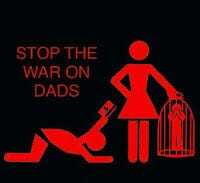
— —
Since I work with kids everyday, I’m not oblivious to the argument for not letting kids say cuss words. Using cuss words in many cases is a form of being disrespectful. And I certainly don’t want to encourage that. But at the same time cuss words do exist. The word “Bullshit” DOES exist. And it is a word that I myself find rather handy at times. Cuss words — or curse words — have been developed by societies and cultures to help us express ourselves more accurately and communicate more efficiently. Today, in our current age of information, expressing yourself more accurately and efficiently is more important than ever. So why should we censor a word that can actually help people better understand one another? When my son looked at his Star Wars action figure things imprisoned in that plastic packaging and uttered, “That’s some bullshit,” his instincts were right. Telling him that he was expressing himself wrong could have sent him the message that his instincts were wrong. In other words, by trying to censor him, THAT would actually be a form of bull shitting him. And I don’t want to bullshit my own kids. I mean some bullshitting is okay of course, like telling him there is a Santa Claus and an Easter bunny and a tooth fairy, but… When I was a kid I could not have gotten away with saying ‘fart’ to an adult, let alone ‘bullshit’ or heaven forbid the f-bomb. So I had to create backhanded ways of expressing the impact of these words without actually using them. I’ll never forget my eureka moment during a 7th grade Social Studies class when our teacher introduced the class to the term shiite muslim. Shiite? That sounds almost like shit! It’s even almost spelled like shit! And it dawned on me that, Ah-hah, I can say the word shiite when I actually want to say shit and technically — technically I couldn’t get in trouble for it. So that afternoon during baseball practice, with a group of a half dozen adults mulling about behind the dugout, when a team mate smacked a long drive into right field and the ball nearly bonked another teammate on the head, I shouted out, “Holy Shiite Muslim — heads up Skippy!” The gaggle of adults actually laughed. This just might work, I reasoned, and from then on the term “Holy Shiite” became a regular part of my pre-teen venacular. Today, many moons later, I see the pre-teen kids I tech doing something similar, calling each other “Little Fockers” after the popular movie of the same name. Maybe the lesson is this: Kids will always find a way to say cuss words (or at least find a way to torment adults).
©2010 Rockism 101. All Rights Reserved
Originally published at generation-add.blogspot.com on April 4, 2017.
[image error]who will save rock n roll?
- Ed Wagemann's profile
- 67 followers



